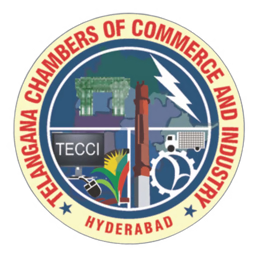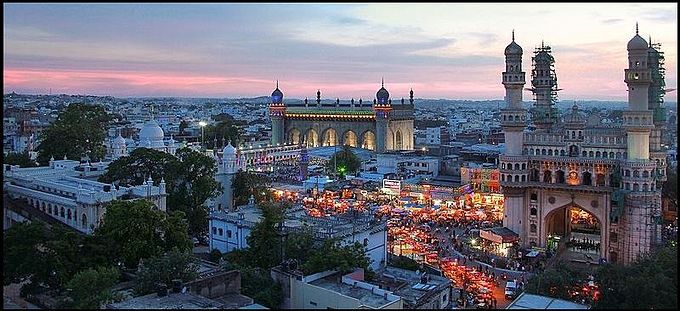
Telangana has a rich history that dates back to ancient times. It was mentioned in the Mahabharata as the Telinga Kingdom, inhabited by the Telavana tribe who fought on the side of the Pandavas in the epic war. Over the centuries, the region has been ruled by various dynasties, including the Sathavahanas, Chalukyas, Kakatiyas, Mughals, and Qutubshahis.
The Kakatiya dynasty, the first Telugu-speaking rulers of the Deccan Plateau, had their capital initially at Hanumakonda and later at Warangal. Notable rulers among them include Ganapathi Deva, Rudra Deva (Rani Rudrama Devi), and Prathapa Rudra. The name Hanumakonda is said to have originated from the times of Ramayana, where Lord Rama met Hanuman.
In the early 18th century, as the Mughal Empire began to disintegrate, the Muslim Asafjahi dynasty established Hyderabad as a separate state. Hyderabad later entered into a treaty of subsidiary alliance with the British Empire but was never under direct British rule, unlike the Coastal Andhra and Rayalaseema regions.The History of Telangana: From Indian Independence
Integration into Andhra Pradesh
After India gained independence in 1947, the princely state of Hyderabad, which included Telangana, sought to remain independent. However, Operation Polo by the Indian Army in 1948 led to the annexation of Hyderabad into the Indian Union. Initially, Telangana was a separate state, but in 1956, it was merged with the Andhra State to form Andhra Pradesh, despite significant opposition.
Linguistic and Cultural Differences
The merger led to widespread discontent among the people of Telangana, who felt marginalized due to linguistic and cultural differences. The people of Telangana primarily spoke Telugu with a different dialect and had distinct cultural practices compared to the Coastal Andhra and Rayalaseema regions.


The Spark Before the Fire
In 1969, 13 years after Telangana’s merger with Andhra Pradesh, discontent grew due to broken promises of resource sharing. The region felt exploited by Coastal Andhra, leading to unrest.
The Student Uprising
Students from Osmania University led peaceful protests demanding jobs, which met with police violence. The movement quickly grew, uniting people across age, caste, and class under the slogan “Jai Telangana.”
The Martyrs
The first martyr, Ravindranath, was killed during protests, igniting a movement. Over 300, mainly students, sacrificed their lives for the cause, shaking the foundations of Andhra Pradesh.
Political Maneuvering
Amidst growing pressure, opposition parties sought political gains, but the people demanded action. Despite promises, no immediate change followed.
A Dream Deferred
The agitation did not lead to Telangana’s statehood but planted the seeds for future movements, preserving the dream of a separate state in the minds of its people.
The Legacy
The 1969 movement instilled pride in Telangana’s identity and exposed systemic injustices, inspiring a new generation of leaders who would ultimately achieve statehood.
Political Developments
Political parties, including TDP and Congress, promised Telangana statehood but used the issue for electoral advantage without substantial action.


A Lone Warrior's Quest
In the early 2000s, the Telangana region felt marginalized, overshadowed by Andhra Pradesh. K. Chandrashekar Rao (KCR), having faced political betrayal, decided in 2001 to form the Telangana Rashtra Samithi (TRS), a party dedicated to fighting for Telangana’s statehood.
The Struggle
Facing opposition from all sides, KCR mobilized mass movements and even fasted unto death for the cause, enduring ridicule but never wavering.
Alliance and Betrayal
TRS allied with national parties to push the Telangana agenda, but faced repeated betrayals, as promises were broken and agreements discarded.
2009 Declaration
In 2009, Union Minister P. Chidambaram announced plans to form Telangana, but political delays led to further protests and agitations.

In the annals of Telangana’s history, December 16, 2010, stands as a monumental day. On this day, the Telangana Chambers of Commerce and Industry (TECCI) was born—not merely as an organization, but as a vision, a mission, and a promise. A promise to elevate Telangana to unparalleled heights in trade, commerce, industry, and agriculture. A mission to drive the state’s economic renaissance. A vision to position Telangana as a powerhouse on India’s industrial map.
TECCI was not just a spectator in Telangana’s formation; it played an active, catalytic role. Submitting reports to the Sri Krishna Committee, it passionately advocated for statehood. TECCI also took the lead in educating the public, creating awareness, and mobilizing collective aspirations. Its unwavering commitment to collaboration, seen through partnerships with government officials and industrialists, has fostered intellectual exchange and mutual growth. As Telangana soars, TECCI stands as a testament to what can be achieved when vision and action come together.
Passage of the Bill
In February 2014, the Andhra Pradesh Reorganization Act was passed, making Telangana a separate state. KCR, overwhelmed with emotion, stood before a jubilant crowd as their long-awaited dream was realized.
Governance and Administration
Under Chief Minister KCR, governance reforms focused on digitization and decentralization. Telangana created new districts, improving administration and increasing the total to 33.
Economic Growth
Telangana’s economy has grown significantly, contributing 72% more to India’s GDP. Hyderabad has attracted major global companies like Amazon, Google, and Apple.
Infrastructure Development
Key infrastructure projects, including the Kaleshwaram Lift Irrigation Project, have addressed water scarcity, alongside investments in roads, metro rail, and more.
Social Welfare Schemes
The government has launched various welfare schemes like Rythu Bandhu, aimed at providing financial assistance to farmers, and KCR Kits, aimed at improving maternal and child health.
The Legacy
By 2023, Telangana, under KCR’s leadership, achieved significant strides in various sectors. The journey, aimed at self-sufficiency, continues under current Chief Minister Shri Revanth Reddy, focusing on infrastructure, economic growth, and welfare schemes for sustainable development.






